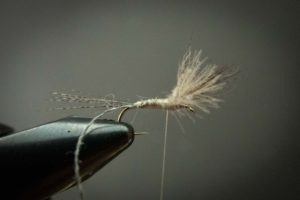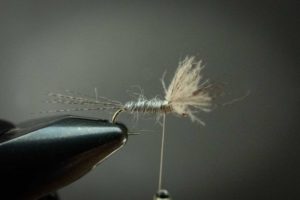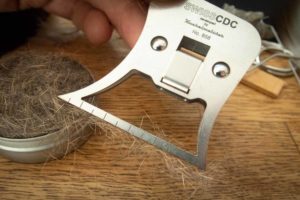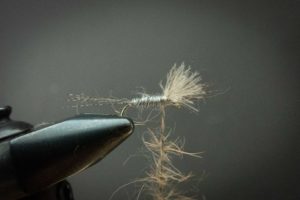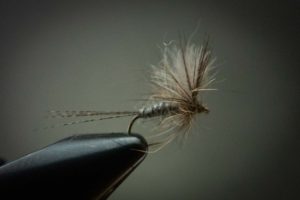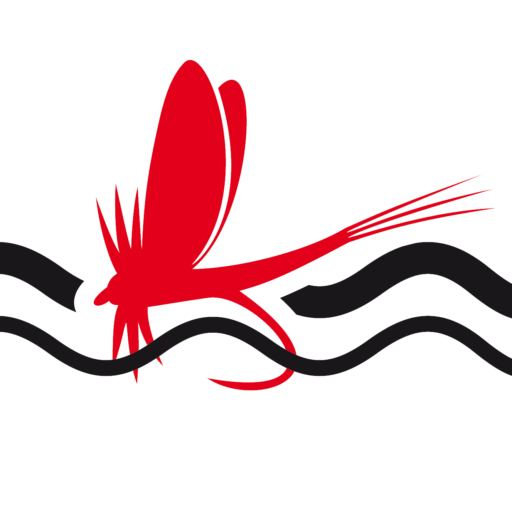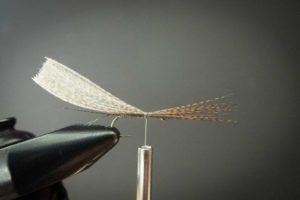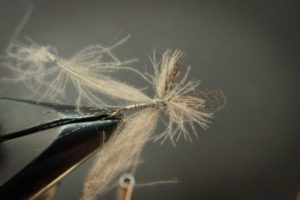On warm summer evenings as we currently have, a lot of different insects swarm an hatch, and the trouts rise to a great variety of things. You don’t have to be an entomologist, to fish successful under such conditions (although the science of insects ist very interesting indeed!)
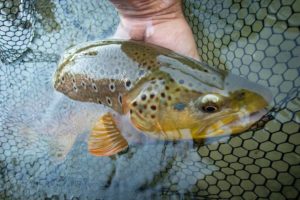 In probably 95% of the time I am fishing a small around pattern, which does not immitate anything special but just looks somewhat buggy, is naturally colored and rather small. An the trouts seem to like it! The big brown trout in the picture was just one of many I have so far caught on this pattern.
In probably 95% of the time I am fishing a small around pattern, which does not immitate anything special but just looks somewhat buggy, is naturally colored and rather small. An the trouts seem to like it! The big brown trout in the picture was just one of many I have so far caught on this pattern.
In the past I have used a CDC-deerhair-dun for these occasions, a pattern which Christian Kuchelmeister taught me. But for some time now I have been using this gray pattern that I came up with myself. You could probably call it a very small Irish mayfly, but is has traits of all kinds of flies. Nothing special really, but very effective.
I use the following materials (you are free to adapt it to your own preferences):
- hook: TMC 100SP-BL #16
- thread: 3/0 Fliesandmore Standard “04-sand”
- tail: Coq de Leon
- abdomen: Fliesandmore Body Wool 300Den Grau (any other fine grey, tan or brown dubbing will do, you can also use some strands of regular knitting yarn)
- wings: mallard and SwissCDC color”Pardo” (standard quality)
- thorax/legs: hare dubbing (I am using a product by Christian Kuchelmeister) but any other spikey dubbing is fine. SwissCDC Argentinian Hare works great too.
Instructions:
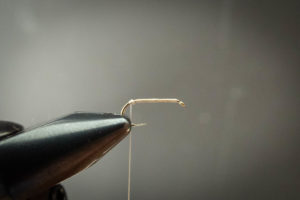
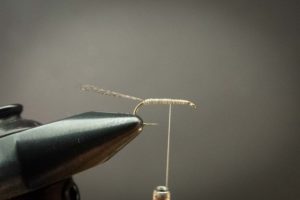
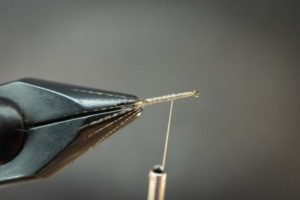
Tie in a bundle of mallard fibres, adjust the length by pulling – ideally it should be a little less thank hook length.
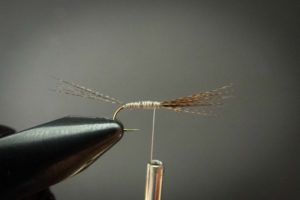
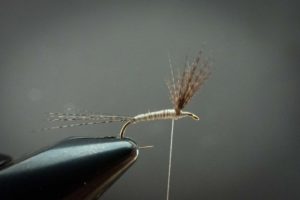
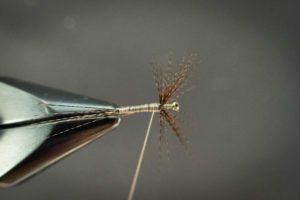
Tie in two small CDC feathers crosswise behind the mallard-wings (view from above).
